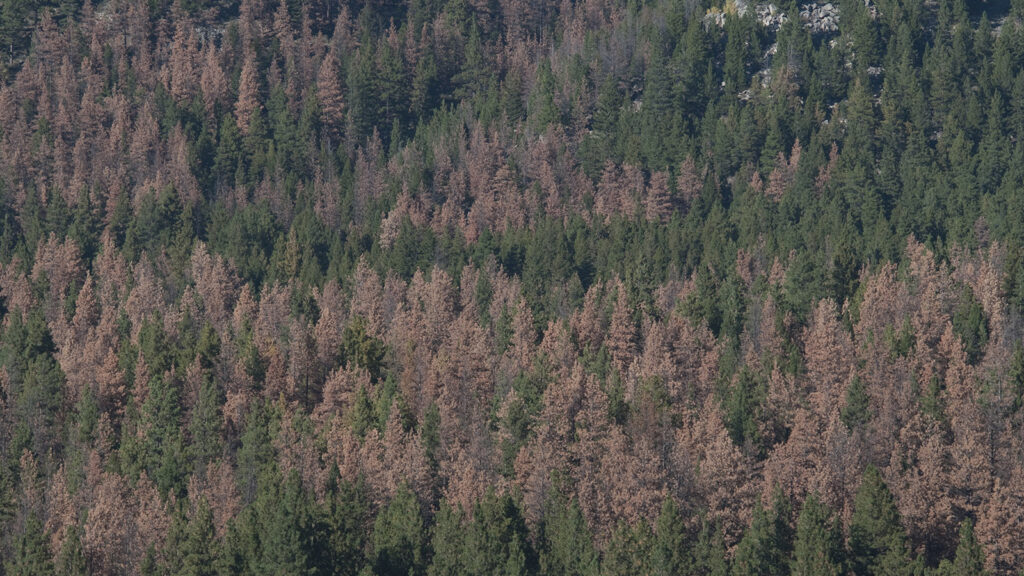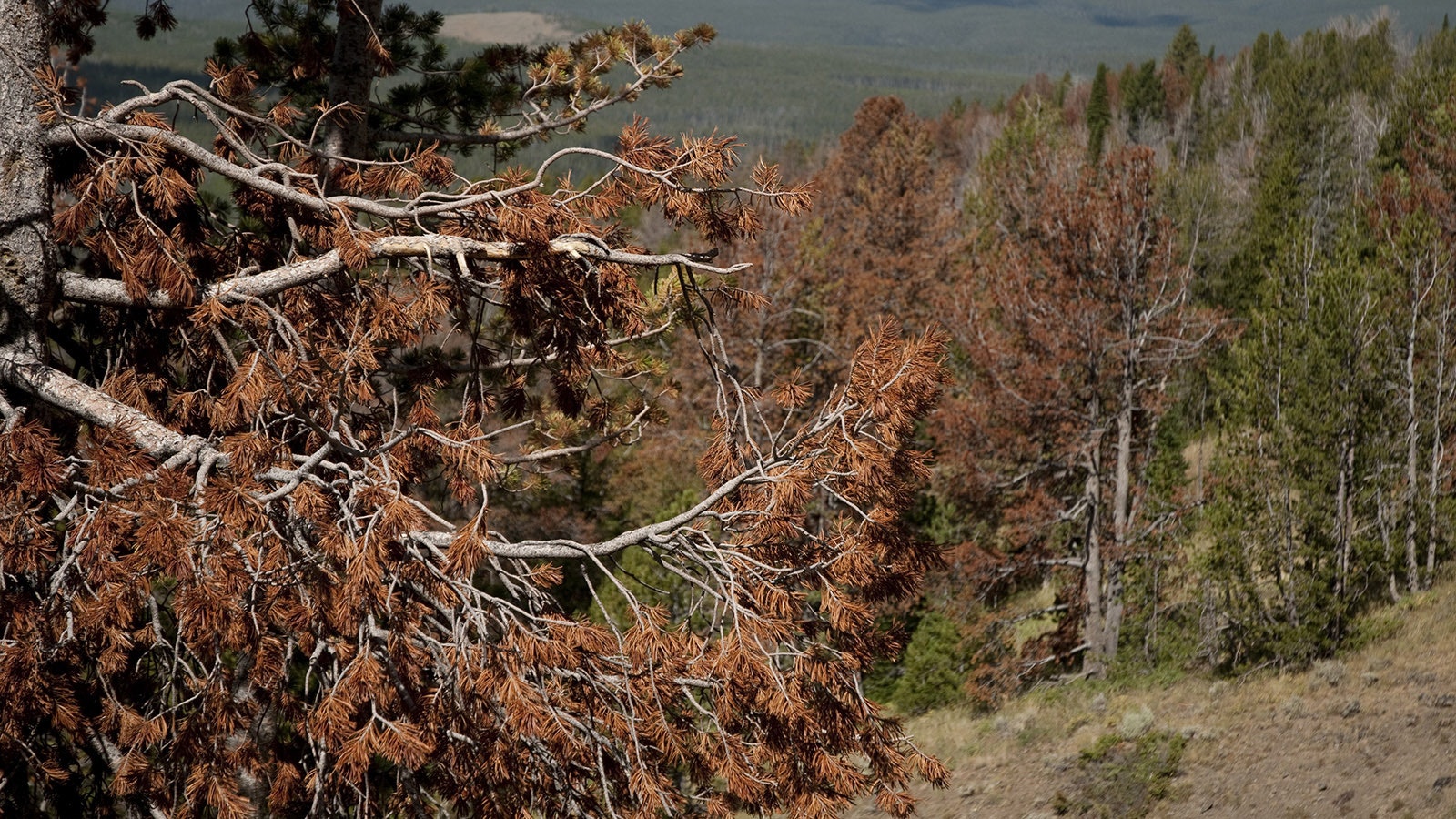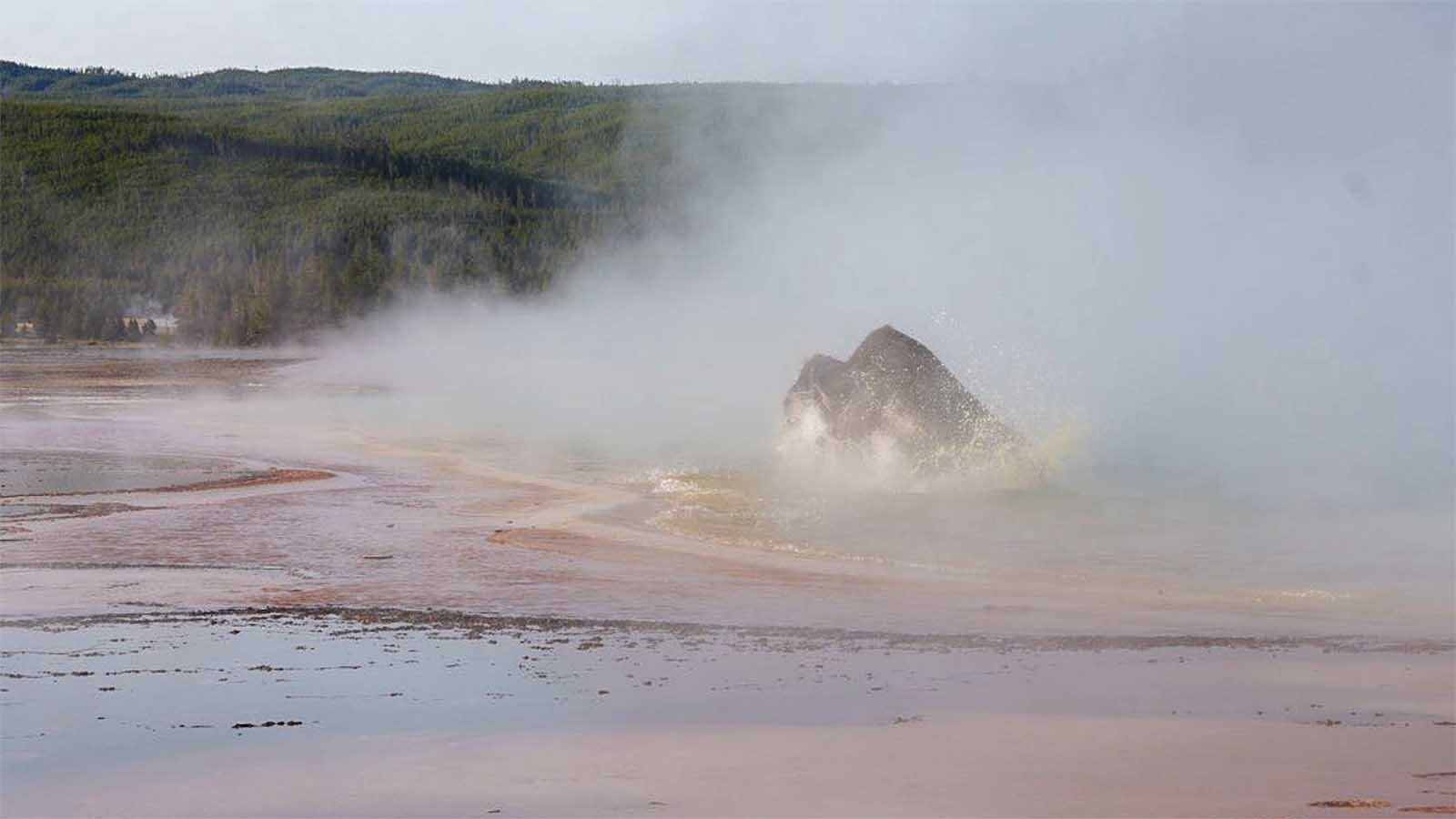Wyoming’s forests were hit in the 2010s with an epidemic of the mountain pine beetle, which left vast swaths of dead trees.
Wyoming wasn’t alone. Throughout the Pacific Northwest, the beetle took out around 45 million acres of pine forest. With rising average temperatures, the pest remains a major threat.
For now, the mountain beetle epidemic has waned, but urban forests in Wyoming face new threats.
Tree Munching
Scott Schell, University of Wyoming extension entomology specialist, told Cowboy State Daily the mountain pine beetle is a native insect that has been munching on Wyoming trees since the last glaciation period, which ended about 25,000 years ago.
Once through the bark of a tree, the insect converts the toxic, sticky resin that’s the trees’ primary defense against pests into pheromones that invite other beetles to join in the party.
Pretty soon the tree gets swarmed and dies.

Half The Trees
The mountain pine beetle epidemic swept through Wyoming between about 2010 and 2020, and it was likely larger than would have happened in the past, Schell said, because Wyoming forests have a lot of uniform age-class pine trees, meaning they’re all about the same age in tree lifespan brackets.
The lodgepole, limber, and whitebark pine found in Wyoming are all part of the same genus that’s susceptible to the mountain pine beetle.
Schell said researchers doing forest health surveys estimate Wyoming lost about 50% of its pine trees and possibly 80% of larger pine trees, as the insect prefers trunks with wider diameters.
Extreme cold kills the insects’ larva in the wintertime, but with warmer temperatures that’s not happening as much. This was suspected to be one of the causes of Wyoming’s outbreak.
New Threat
Schell said that the mountain pine beetle outbreak has subsided.
But Mark Ellison, city forester with the city of Cheyenne, told Cowboy State Daily other insect threats are descending upon Wyoming trees, particularly in towns and cities.
“We’ve been battling the spruce beetle for the past five or six years,” Ellison said.
The emerald ash borer is spreading across neighboring states, including Colorado, and is likely to become a problem for Wyoming.
Josh Pomeroy, certified arborist and owner of Blue Ribbon Tree Service in Powell, told Cowboy State Daily it’s been spotted in Fort Collins.
“It’s right on the Laramie and Cheyenne doorstep,” Pomeroy said.
Losing Battle
Many Wyoming communities populate their urban forests with spruce trees, one of the most common types of trees planted in Cheyenne, Ellison said.
It’s a shallow-rooted tree and not very drought tolerant. If they don’t get enough water, spruce are susceptible to the spruce beetle.
“The lack of water, the drought, is reducing their defenses. The beetle can detect the trees that are struggling or have low energy reserves,” Ellison said.
As a result, Cheyenne has seen a steady decline of spruce trees. If there isn’t enough precipitation and people don’t water their trees, they’re going to get infected.
“That’s one we’re currently battling, and losing,” Ellison said.
Aggressive Insect
Pomeroy said that in Park County, he’s seeing a growing threat from the western ash bark beetle.
“It’s very much in our trees and attacking the ash trees pretty aggressively,” Pomeroy said.
Like the mountain pine beetle, the western ash bark beetle is a native insect, but where the mountain pine beetle hangs out in mountain forests, the western ash bark beetle is more of an urban forest problem.
Pomeroy said ash trees are “stressed,” which is making them susceptible. There’s been a number of stressors, including multiple freeze events in the spring and fall since 2018.
“A pathogen will find it a lot easier to attack a stressed tree, whether it’s an insect, fungus or bacteria,” Pomeroy said.
Traditionally, Pomeroy said, the beetle wasn’t anything to worry about, but today it’s becoming a killer.
Tree Care
Part of the problem is that cities don’t diversify their urban tree stock. The Dutch elm was a popular tree across America until Dutch elm disease, a fungal infection, came along in the 1940s.
“That decimated the American elm population,” Ellison said.
Ash trees were considered a good substitute, so ash trees replaced the elms. Now that the ash borer threatens ash trees, history is repeating itself.
“Lots of tree folks advocate having a diversity of trees planted in town. It helps prevent pests from wiping out everything,” Schell said.
Ellison said that with the drought conditions and warming temperatures, spruce trees just can’t survive without human assistance. Trees aren’t native to the high plains, he explained. They’re native along creeks, rivers, and lakes, but trees in town typically have to be watered and cared for.
“A lot of these trees could survive,” Ellison said.
Pruning
Pomeroy said there are systemic insecticide treatments for the western ash bark beetle infestation, what’s called a root drench.
“The other thing that helps a lot is increasing the overall tree health,” Pomeroy said.
This includes pruning dead material. The ash bark beetle tends to start working on dead parts of the trees and then moves into the healthier portions.
Like Ellison, Pomeroy said that in a dry state like Wyoming, irrigation will help trees fight off insects.
“If we can water our trees more, more regularly and deeper, to hit that critical root zone, trees typically do a lot better,” Pomeroy said.





